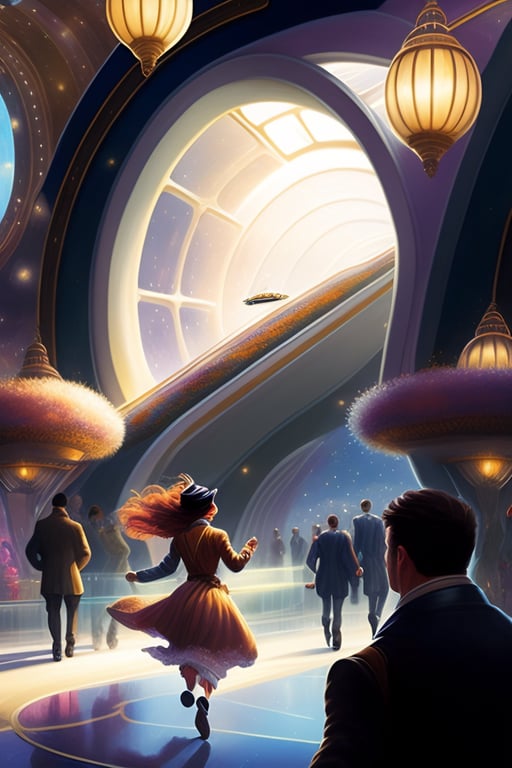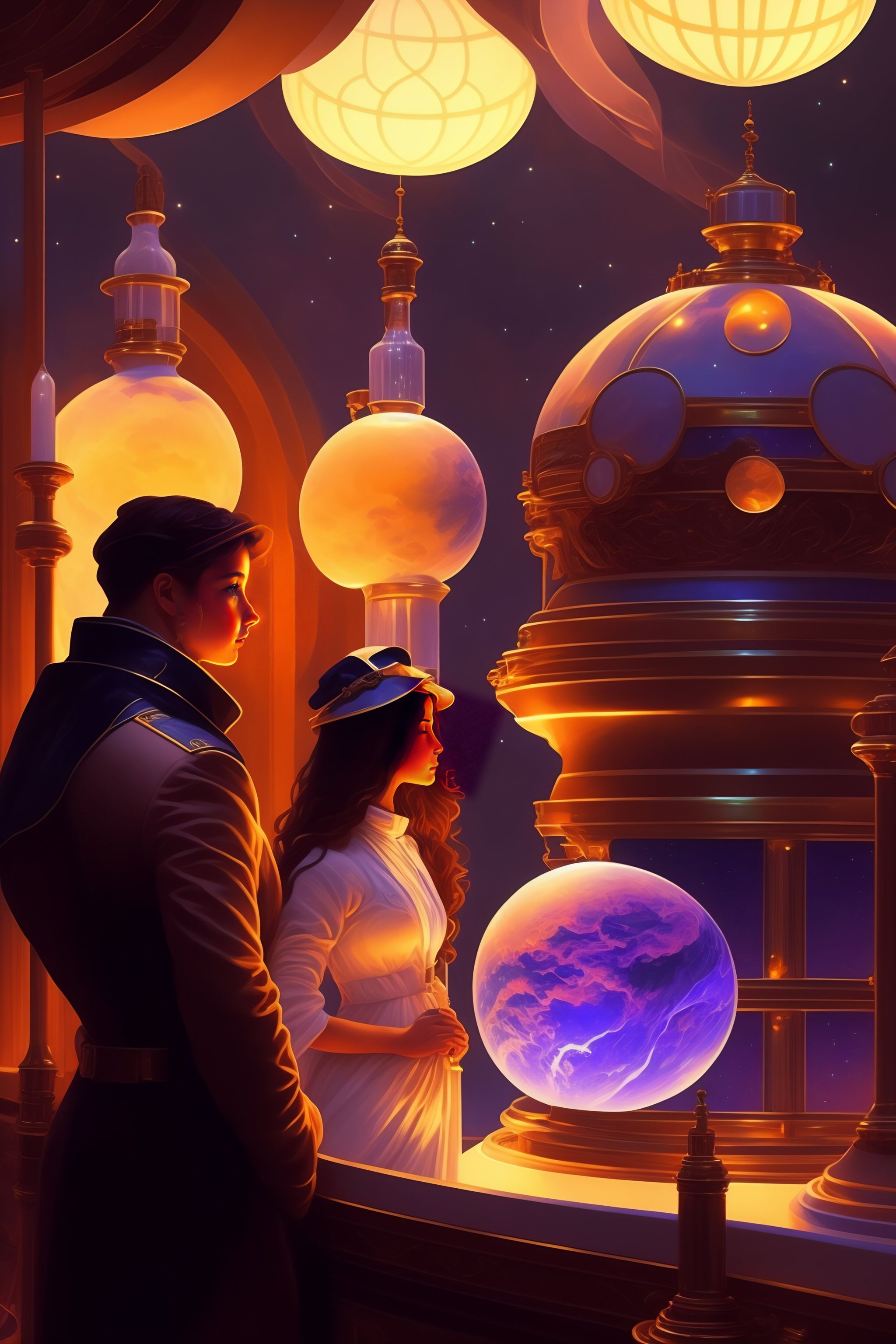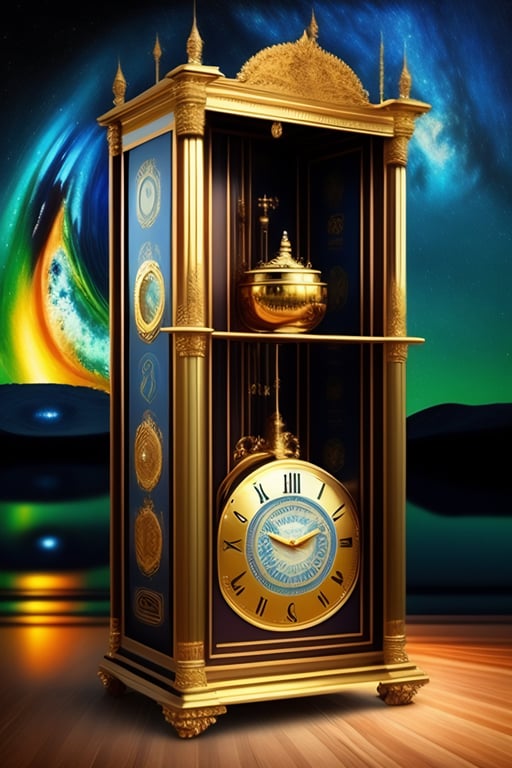The Time Travellers' Guide to the Universe
Once upon a time, in a distant future, a group of scientists had discovered a way to travel through time. They had spent years researching and testing different theories until finally, they had created the world's first time machine.
The scientists were overjoyed at their success and decided to embark on a journey through time. They called their expedition "The Time Travellers' Guide to the Universe" and planned to travel to different points in time to learn more about the history of the universe.
Their first stop was the beginning of time itself. The scientists watched in awe as the universe formed around them. They observed the birth of galaxies and the formation of stars, planets, and other celestial bodies.
As they continued their journey through time, the scientists encountered many different civilizations and witnessed countless historical events. They visited ancient Egypt and saw the construction of the pyramids. They travelled to the Roman Empire and watched Julius Caesar cross the Rubicon.
The scientists also visited the future, where they saw amazing technological advancements and met beings from other planets. They learned about the mysteries of the universe, including dark matter and the possibility of parallel universes.
Throughout their journey, the scientists documented everything they saw and experienced. They wrote a guidebook for other time travellers to follow, which became known as "The Time Travellers' Guide to the Universe." The guidebook contained detailed information about each time period they visited, including the language, customs, and important historical events.
The guidebook became an instant success and was widely used by other time travellers. People from all over the universe used it to explore different points in time and to learn more about the history of the universe.
The scientists were hailed as heroes and were honored for their contributions to science and exploration. Their journey through time had not only expanded our understanding of the universe, but it had also inspired others to continue exploring and pushing the boundaries of what we know.
And so, the legacy of "The Time Travellers' Guide to the Universe" lived on, inspiring generations of explorers and adventurers to come.
As the popularity of "The Time Travellers' Guide to the Universe" grew, so did the demand for more detailed and comprehensive information about different time periods. The original team of scientists who had created the guidebook realized that they needed to expand their research and explore even more parts of the universe to provide more in-depth insights.
They set out on a second journey, traveling to even more distant parts of the universe and exploring time periods that had never been visited before. They delved into the depths of the ocean during prehistoric times, observed the rise and fall of ancient empires, and even visited the end of the universe itself.
As they traveled, they encountered new challenges and obstacles that they had not faced during their first journey. They encountered hostile civilizations, dangerous creatures, and unforeseen technological failures. However, they persevered, driven by their curiosity and the desire to expand human knowledge.
During their travels, the team of scientists made many new discoveries and learned even more about the mysteries of the universe. They encountered ancient civilizations that had been lost to history, discovered new sources of energy, and even met beings that existed beyond time itself.
Their second journey took them many years, but they eventually returned with a wealth of new knowledge and insights. They updated the guidebook with their new findings, making it even more comprehensive and valuable to time travelers everywhere.
The expanded guidebook became an instant hit, with people from all over the universe clamoring to get their hands on it. It became the go-to resource for anyone interested in time travel, and its influence extended far beyond the scientific community.
In the end, the team of scientists had not only expanded human knowledge about the universe, but they had also inspired a whole new generation of explorers to continue pushing the boundaries of what was possible. Their legacy lived on, and their contributions to science and exploration would never be forgotten.
As time passed, "The Time Travellers' Guide to the Universe" continued to be updated and expanded by new generations of scientists and explorers. It became a living document, constantly growing and changing as new discoveries were made and new time periods were explored.
The guidebook inspired countless individuals to embark on their own journeys through time, and many new breakthroughs were made as a result. New technologies were developed, allowing people to travel even further and with greater precision than ever before.
As the universe continued to expand and evolve, so too did our understanding of it. With every journey through time, new questions were raised, and new mysteries were uncovered. But with each answer we found, we also discovered new wonders, and our appreciation for the vastness and complexity of the universe only grew.
In the end, "The Time Travellers' Guide to the Universe" became more than just a scientific resource – it became a symbol of human curiosity and ambition. It showed us that no matter how much we discover, there will always be more to explore, and there will always be more to learn.
And so, we continue to travel through time, guided by the lessons and insights of those who came before us. We explore new time periods and new corners of the universe, driven by our unending thirst for knowledge and understanding. And we do it all with the knowledge that we are a small part of something much bigger – a universe that is vast, complex, and endlessly fascinating.



Comments
Post a Comment